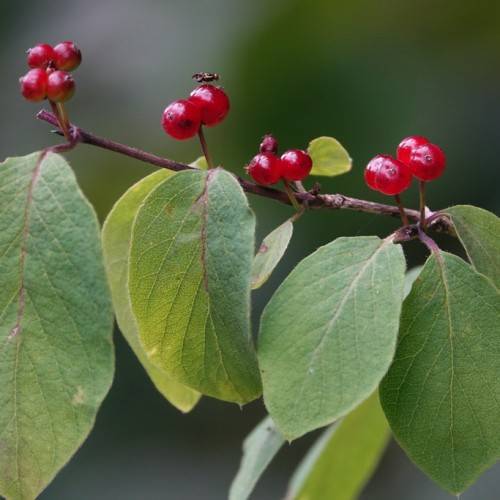
dwarf honeysuckle
Lonicera xylosteum
Also Known As - shrub honeysuckleCycle:
Perennial
Watering:
Average
Hardiness Zone:
4 - 6
Flowers:
Flowers In Spring
Sun:
Full sun
Soil:
Humus rich, Well-drained
Fruits:
Fruits In Summer Ready In Fall
Edible:
Yes
Leaf:
Yes
Growth Rate:
High
Maintenance:
Low
Poisonous To Pets:
Yes
Drought Tolerant:
Yes
Thorny:
Yes
Invasive:
Yes
watering
Water dwarf honeysuckle regularly. Water them with 1-2 inches of water each week during the growing season, and reduce watering frequency during the winter when the plants are dormant. Apply the water at ground level, rather than from overhead, and be careful not to wet the foliage, as this encourages disease problems. Depending on the weather and soil, once-a-week watering may be sufficient; if the soil remains consistently dry, you may need to water more frequently.
sunlight
Dwarf honeysuckle (Lonicera xylosteum) is a plant species that enjoys plenty of sunlight. Its ideal conditions include full sun, which is defined as anywhere from 6 to 8 hours of direct sunlight each day. If planted in a shadier location, Dwarf honeysuckle can still grow, but its growth rate and flowering will be reduced. This species can be planted in both spring and fall, allowing more opportunity to take advantage of optimal day-length and temperature conditions.
pruning
Dwarf honeysuckle should be pruned twice a year. In the early spring, shortly before the new growth appears, it should be pruned back to a height of about 8 inches above the soil line. In the late summer, any excess or dead growth should be pruned away. Depending on your climate and the desired shape of the bush, pruning can be done lightly or heavily. Additionally, any dead or diseased branches should be removed at the base. This species responds well to occasional pruning, so don’t be afraid to prune lightly several times throughout the growing season.
